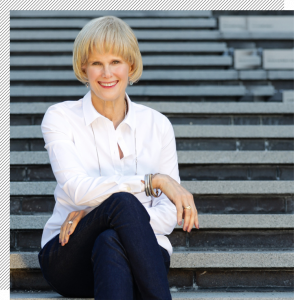Personal Branding Tips: How to Boost Your Strategy
Photo courtesy of Bailey Zindel on Unsplash
2020 has been a challenging year and 2021 promises its own challenges. But let’s not allow that to detract from your personal brand. That’s why I want to share some personal branding tips that will help you to succeed in 2021 and beyond.
But before we get into the personal branding tips themselves, why should you even care about building a personal brand?
Why Personal Branding is Important
A personal brand is not that different from a company’s brand. Instead of showcasing a store or product, you’re marketing yourself — mainly, your knowledge and expertise.
But why do it? Why is personal branding important — what does it get you?
Probably the most important reason to have a personal brand is that it helps you to stand out from the crowd.
Doubtless zillions of people are in your industry, all vying for the same attention, the same jobs and the same promotions. If someone googles you and doesn’t find anything substantial, they will assume that you are not special. They won’t see your expertise, your years of experience, or your personality.
Developing a personal brand puts your reputation in your hands. You get to show people how talented you are at what you do and the knowledge that you bring to the table.
When you create an online personal brand, it is a constant testament to your expertise. It can be accessed by anyone, anywhere, which greatly increases the amount of opportunities that will come your way.
As a personal branding coach, I have seen the difference a personal brand can make in a person’s life. That is why I advocate that everyone wanting to distinguish themselves in their career needs to develop a personal brand.
Now that we’ve established why personal branding is important, let’s discuss some personal branding tips. Here are my personal recommendations for how to establish your own personal brand.
10 Personal Branding Tips You Need to Know for 2021
1. Pick a Lane
Possibly the biggest mistake that I see people make is being all over the road, in a manner of speaking. They are experts in everything and cover an extremely wide range of subjects.
This oftentimes works against you. The more subjects you are an “expert” in, the more your expertise becomes diluted.
Instead, focus on one area of expertise where you truly bring value. This will help you to really stand out.
2. Develop a Brand Statement
A brand statement introduces your personal brand to the world. It is a personal mission statement that tells people what to expect from you. It’s the packaging that sets you apart from other brands on the figurative store shelf.
It might sound like a lot of pressure, but don’t get too caught up in it. Remember, it is not set in stone — it will probably change as your brand grows. For now, focus on the basics.. Who you are. What you do. Your audience. Why anyone should care.
Now that you have the basics, don’t forget to infuse it with some personality. This takes a generic, dime-a-dozen statement and turns it into a declaration that people will remember.
3. Create Content
Content like blogs, infographics, videos and podcasts help your audience to get to know and trust you. Without content, you are no more than a pretty face on social media.
Ask yourself what challenges your audience faces. What questions do they most commonly ask? This can be a great starting point for your content creation.
If the written word is your creative outlet of choice, then look at creating a website and blog where you can post your own content and share it to social media. LinkedIn also has a great and convenient platform for writing and sharing written content.
If visuals are more your thing, then check out Canva and other online tools to help you make beautiful, sharable content.
Whatever content format you choose, go at it. Create and share as much as you can across your social media and other platforms where your audience consumes content.
4. Build an Online Presence
A personal brand in 2021 is nothing without an online presence. As mentioned above, this could include a website and/or social media.
When it comes to social media, there are many options to fit your brand image. There are, of course, the traditional three: Facebook, Twitter, and LinkedIn, all of which have great features to promote your personal brand.
Other platforms that have unique features include Instagram, YouTube, Snapchat, and even TikTok.
Whatever social networks you choose to grow your brand, put in the time to make a success. Share content. Engage with your audience. Connect with others on the network, liking, commenting and sharing their content. This kind of engagement is what makes any social media strategy a success.
5. Promote Yourself
Look for every avenue to promote your brand — and there are plenty of avenues to choose from, including social media and online events.
You might choose from any of the following promotion tactics…
- Guest post on a highly respected industry site.
- Speak at an industry event, which for the near future most likely means a virtual event.
- Connect with others in your industry on social media.
- Join groups on Facebook and LinkedIn.
- Appear on a podcast as a guest.
All of these are viable options to get your brand in front of new audiences and shine some light on your worth.
6. Be Consistent in Personal Branding
Can people immediately identify your social media page as soon as it loads? If not, you need to work on consistency.
Consistency means delivering the same quality across all of your channels. It could be as basic as using the same logos, photos, and brand colors across all of your social networks.
But taking it a step further, your channels should all strive to deliver the same quality of content. You don’t want them to be identical, but you do want people to recognize a theme in your social feeds. For instance, if your audience on Twitter is accustomed to industry tips and trends, but your Facebook page is mostly funny cat memes, people coming from Twitter to Facebook would wonder if they are in the right place.
Remember: Vary your content on each network, but keep to a consistent theme and voice.
7. Take Advantage of Social Media
Social media has a lot of great features and each network is frequently releasing new ones. As you build your personal brand, don’t be afraid to explore these features.
You could…
- Create daily Stories on Instagram to keep your audience plugged into what is new with your brand.
- Create a poll on Facebook or Twitter to see what people are most interested in.
- Live stream important events on Facebook, Twitter, or Linkedin.
These are just some of the most popular features right now. But, as I noted, social media is often unveiling new features, so be on the lookout and look for ways to use each new feature for your brand.
8. Leverage Influencers
Influencers dominate social media, so if you want to grow your personal brand on a platform, partnering with an influencer is probably your best bet.
Influencers are individuals on social media with a large following and as the name suggests a lot of influence on their audience. Those following an influencer are often loyal and listen to what an influencer says. Having an influencer work with you can provide incredible exposure for your brand.
The first step to using influencers is to do your research. Every industry has its own influencers and you need to learn which one best fits your personal brand and goals. Check out potential influencers and get a feel for what kind of content they like to share and their overall personality. Use a tool like BuzzSumo to vet influencers.
Once you know which influencer you’d like to work with, reach out to see how you might collaborate. This could mean writing a guest post, co-authoring an ebook, or simply sharing a piece of your content with the influencer’s audience.
9. Focus on Your Audience
As a brand, it’s essential to understand what is important to your audience. What struggles do they face? What content would help them navigate a certain problem? Where do they commonly go for answers? What can you do to make their lives a little easier?
When you orient your brand to your audience, not yourself, it will attract prospects.
Of course, this isn’t always easy, and you might have to occasionally step back and refocus. But keeping your audience in the back of your mind will help you to create a brand where your audience feels at home.
10. Be Authentic
“Just be you” is probably one of the most commonly used phrases in coaching. But there’s a reason for it, especially when it pertains to creating a personal brand. Audiences want to follow real people who mean what they say.
If you want your personal brand to succeed, then you can’t be one person on social media and another person off of it. When you create messaging, make sure that it is a true representation of who you are and what you stand for.
So, throw away that idea that you have to be perfect. Audiences don’t want perfection — they want real people with real emotions and qualities to whom they can relate.
Those are my personal branding tips. I hope these tips help you to establish and grow your personal brand for 2021 and beyond.
Note: This post originally appeared on Marx Communications Blog





